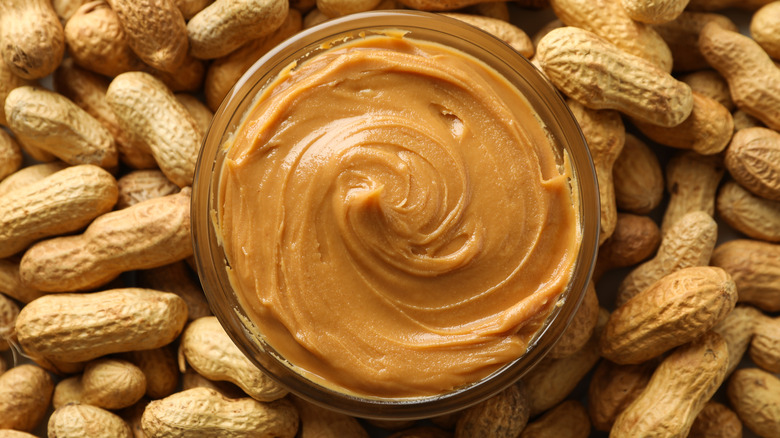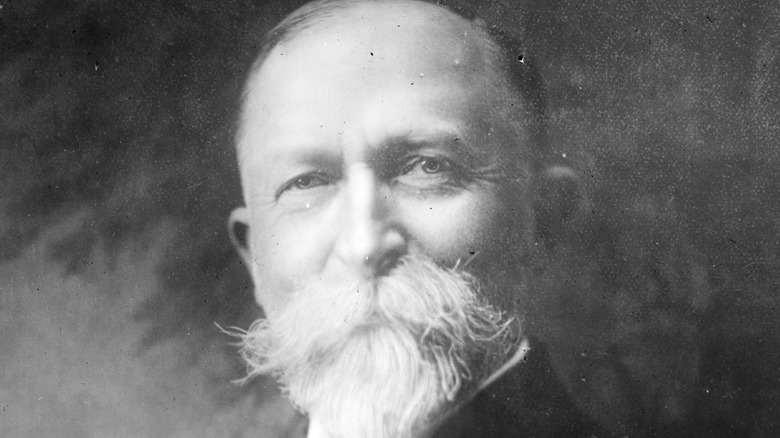How Peanut Butter Was Invented
It's a staple of the American cupboard: humble peanut butter, an astonishingly simple blend of ground peanuts, salt, and in some cases, oil and preservatives, as Simply Recipes notes. And if YouTube is any indication, it confuses and disgusts some non-Americans.
Peanut butter's versatility is practically limitless. In addition to the ubiquitous peanut butter and jelly sandwich, the spread can also be used on crackers, served with fruit, made into cookies, or it can even be used as the basis for a soup (per In The Kitch). When all else fails, there's no harm in eating it straight from the jar.
Despite its versatility, however, peanut butter –- at least, as we know it –- has only been a thing for around a century and a half, according to Smithsonian Magazine. And, it wasn't invented by one person alone, but rather, through the innovation and promotional efforts of multiple individuals.
Thank Dr. John Harvey Kellogg, mainly
Centuries before the peanut butter we all know and love began gracing our cupboards, the ancient Incas had been making a paste of ground, roasted peanuts, according to Smithsonian Magazine. So there's that.
Fast forward to the 19th century, when Canadian Marcellus Gilmore Edson created the first patent for a peanut "paste," which was produced by placing roasted peanuts between two heated surfaces and grinding them down (per HuffPost). Then in 1895, Dr. John Harvey Kellogg, the creator of Kellogg's Corn Flakes, filed a patent for making something like modern peanut butter, which was a paste made up of boiled and ground nuts — almonds or other nuts could have been used, in addition to peanuts. Kellogg saw the legume spread as a rich source of protein for his patients without teeth. A decade later, in 1903, a St. Louis man named Dr. Ambrose Straub also patented a peanut butter-making machine.
So while multiple men had a hand in developing what we now call peanut butter, it was one of Kellogg's employees, Joseph Lambert, who helped spur peanut butter's ubiquity and popularity, according to Smithsonian Magazine. Specifically, he invented machines to grind and roast peanuts on an industrial scale and was soon selling machinery to peanut butter businesses all across the country.

